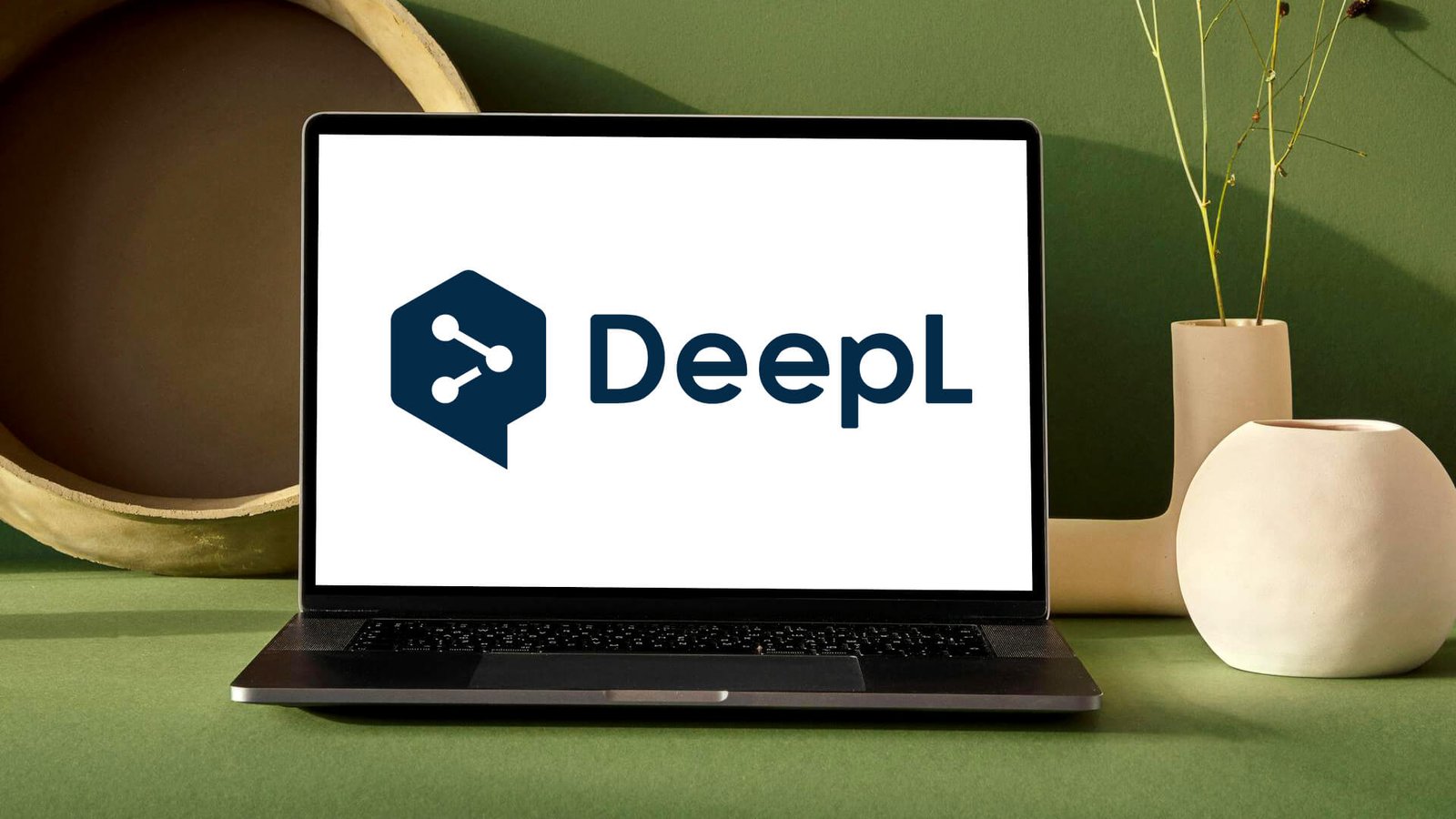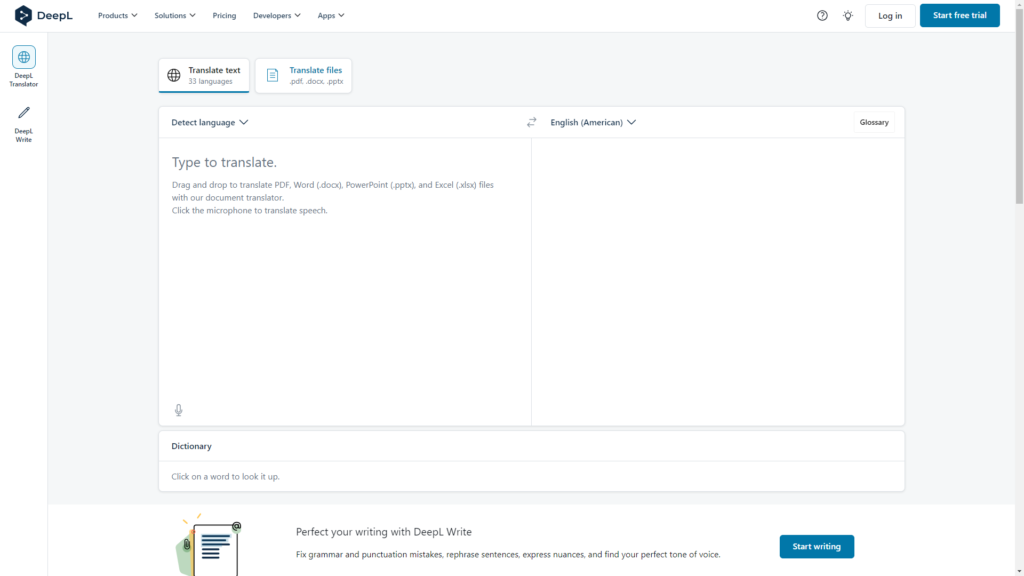
Unlocking the Power of DeepL for Translation: Revolutionizing Language Services
In a world increasingly interconnected by global communication and collaboration, effective translation services are more crucial than ever. Traditional translation methods often fall short when it comes to accuracy, nuance, and efficiency, leading to potential misunderstandings and inefficiencies.
Enter DeepL, a cutting-edge translation tool that promises to revolutionize the way we approach language services. This article explores how DeepL is transforming the translation landscape, addressing common challenges, and offering innovative solutions that enhance communication across linguistic boundaries. By leveraging DeepL’s advanced technology, businesses, educators, and individuals can achieve superior translation quality and streamline multilingual interactions.

Common Translation Challenges Addressed by DeepL
1. Inaccurate Translations
Challenge: Many translation tools struggle with accuracy, particularly when dealing with complex sentences, idiomatic expressions, or specialized terminology. This can lead to misinterpretations and loss of meaning.
DeepL employs state-of-the-art neural network technology to deliver highly accurate translations. Its AI models are trained on extensive multilingual datasets, allowing DeepL to understand context and nuances better than many traditional translation tools. This results in translations that are more precise and true to the original text.
2. Lack of Contextual Understanding
Challenge: Translation tools often fail to grasp the context in which certain phrases or terms are used, leading to awkward or incorrect translations.
DeepL’s advanced algorithms consider the broader context of a text, including previous and subsequent sentences, to ensure that translations reflect the intended meaning. By analyzing context, DeepL provides translations that are coherent and contextually appropriate.
3. Limited Language Support
Challenge: Some translation tools offer limited language options, which can be a significant barrier for users needing translation services for less commonly spoken languages.
DeepL supports a wide range of languages, including many that are less commonly represented in other translation tools. This extensive language support enables users to translate between a diverse set of languages, expanding accessibility and inclusivity.
4. Inefficiency in Handling Large Texts
Challenge: Translating large volumes of text can be time-consuming and cumbersome with traditional tools, often requiring manual adjustments and edits.
DeepL offers efficient handling of large texts, with the ability to process and translate extensive documents quickly. Its user-friendly interface allows for batch translations and seamless integration into workflows, saving time and effort.
5. Inconsistent Translation Quality
Challenge: Translation quality can vary significantly across different tools and services, leading to inconsistency in communication.
DeepL maintains high-quality standards across its translations by leveraging advanced machine learning techniques and continuous model improvements. This consistency ensures that translations are reliable and meet professional standards.
Emerging Trends in DeepL for Translation
1. Neural Machine Translation
Trend: DeepL is at the forefront of neural machine translation (NMT) technology, which uses deep learning algorithms to enhance translation accuracy and fluency.
Impact: Neural machine translation offers more natural and human-like translations by understanding context and nuances. This technology improves the overall quality of translations and makes them more reliable for professional use.
2. Integration with Business Applications
Trend: DeepL integrates with various business applications, such as CRM systems and content management platforms, to streamline translation processes.
Impact: Integration with business applications facilitates seamless translation workflows and enables real-time translation of content within existing tools. This integration enhances efficiency and ensures that multilingual content is managed effectively.
3. Enhanced Language Support
Trend: DeepL continues to expand its language support, including both widely spoken and lesser-known languages.
Impact: Increased language support broadens the scope of translation services, making it easier for users to communicate across diverse linguistic backgrounds. This expansion supports global reach and inclusivity in communication.
4. Real-Time Translation Capabilities
Trend: DeepL offers real-time translation features that allow users to translate text instantly during live interactions.
Impact: Real-time translation enhances communication in scenarios such as international meetings and customer support interactions. It enables immediate understanding and response, facilitating smoother and more effective multilingual exchanges.
5. Customizable Translation Models
Trend: DeepL provides options for customizing translation models to suit specific industry needs or terminology.
Impact: Customizable models allow organizations to tailor translations to their particular sector, ensuring accuracy and relevance. This customization improves the quality of translations for specialized fields, such as legal, medical, or technical domains.
6. AI-Driven Improvements
Trend: DeepL continuously improves its translation models using artificial intelligence and machine learning techniques.
Impact: Ongoing AI-driven enhancements lead to progressively better translation quality and performance. DeepL’s commitment to innovation ensures that users benefit from the latest advancements in translation technology.
7. Focus on User Experience
Trend: DeepL emphasizes user experience by providing an intuitive interface and user-friendly features.
Impact: A focus on user experience makes DeepL accessible and easy to use for both individuals and businesses. An intuitive interface and helpful features contribute to a more seamless and productive translation process.
The Evolving Role of DeepL in Translation
1. From Basic to Advanced Translations
Evolution: DeepL is transforming from a basic translation tool to an advanced solution that offers high-quality, context-aware translations.
Impact: The evolution of DeepL enhances its utility for professional and academic purposes, providing translations that are not only accurate but also contextually relevant and fluent.
2. Integration with Emerging Technologies
Evolution: DeepL integrates with emerging technologies such as voice recognition and natural language processing to offer new capabilities.
Impact: Integration with voice recognition and natural language processing expands the functionality of DeepL, enabling users to translate spoken language and interact with translations in more dynamic ways.
3. Expansion of Use Cases
Evolution: The use cases for DeepL are expanding beyond traditional text translation to include applications in global content management, customer service, and international marketing.
Impact: The expansion of use cases broadens the applicability of DeepL, making it a versatile tool for a wide range of translation needs. This versatility supports global operations and enhances communication across diverse contexts.
4. Focus on Ethical AI and Fairness
Evolution: DeepL is committed to ensuring that its AI models operate ethically and fairly, avoiding biases and ensuring equitable translation services.
Impact: A focus on ethical AI and fairness promotes trust in DeepL’s translations and ensures that the tool provides unbiased and accurate translations for all users.
5. Enhanced Collaboration and Integration
Evolution: DeepL facilitates enhanced collaboration and integration with other tools and platforms, improving the overall translation ecosystem.
Impact: Enhanced collaboration and integration enable users to incorporate DeepL into their existing workflows and systems, creating a more cohesive and efficient translation process.
6. Greater Emphasis on Accessibility
Evolution: DeepL is placing a greater emphasis on accessibility, ensuring that its translation services are available to users with diverse needs and backgrounds.
Impact: Improved accessibility makes DeepL’s translation services more inclusive and user-friendly, supporting a wider range of users and use cases.
7. Commitment to Continuous Innovation
Evolution: DeepL is dedicated to continuous innovation, incorporating new features and advancements to stay at the cutting edge of translation technology.
Impact: Ongoing innovation ensures that DeepL remains a leading solution in the translation space, offering users the latest advancements and maintaining its position as a top choice for high-quality translations.
Real-World Examples of DeepL in Action
1. Case Study: International Law Firm
An international law firm uses DeepL to translate legal documents and correspondence between multiple languages. The platform’s accuracy and contextual understanding help ensure that legal terminology is correctly translated, reducing the risk of misinterpretation.
2. Case Study: Global E-Commerce Platform
A global e-commerce platform leverages DeepL to translate product descriptions and customer reviews for its international website. DeepL’s high-quality translations help the platform maintain a consistent brand voice and enhance the customer experience across different languages.
3. Case Study: Multinational Corporation
A multinational corporation employs DeepL for internal communication and documentation. The platform’s real-time translation capabilities facilitate smooth communication between teams in different countries, improving collaboration and efficiency.
4. Case Study: Academic Research Institution
An academic research institution uses DeepL to translate research papers and publications for international dissemination. DeepL’s advanced language support and contextual accuracy help ensure that complex research concepts are conveyed accurately to a global audience.
5. Case Study: Travel and Hospitality Company
A travel and hospitality company utilizes DeepL to translate marketing materials and customer support content. DeepL’s ability to handle large volumes of text and maintain high-quality translations helps the company deliver consistent messaging and support to travelers worldwide.
6. Case Study: Healthcare Provider
A healthcare provider employs DeepL to translate patient information and medical records. The platform’s accuracy and contextual understanding are crucial for ensuring that medical information is translated correctly, supporting patient care and communication.
7. Case Study: Educational Institution
An educational institution uses DeepL to translate course materials and communications for international students. DeepL’s customizable translation models allow the institution to tailor translations to specific academic needs, enhancing the learning experience for students from diverse linguistic backgrounds.
Challenges and Considerations for the Future of DeepL in Translation
1. Integration with Existing Systems
Challenge: Integrating DeepL with existing translation workflows and systems can require careful planning and technical adjustments.
Consideration: Organizations should develop a clear integration strategy, work with DeepL’s support team, and ensure that the platform aligns with existing processes and tools.
2. Data Privacy and Security
Challenge: Ensuring data privacy and security within DeepL is crucial, especially when handling sensitive or confidential information.
Consideration: DeepL should implement robust data privacy and security measures, including encryption and compliance with relevant regulations. Organizations should verify that DeepL meets their data protection requirements.
3. Training and Adoption
Challenge: Successful adoption of DeepL may require training for users to fully utilize the platform’s features and capabilities.
Consideration: Invest in training programs and resources to help users become familiar with DeepL. Providing ongoing support and assistance will facilitate effective adoption and utilization.
4. Cost Management
Challenge: Implementing and maintaining DeepL may involve costs, particularly for larger-scale deployments.
Consideration: Conduct a cost-benefit analysis to evaluate the potential return on investment. Explore flexible pricing models and scalability options to manage costs effectively.
5. Ensuring AI Accuracy and Fairness
Challenge: Ensuring that DeepL’s AI models remain accurate and fair is essential for maintaining the quality and reliability of translations.
Consideration: Regularly audit and evaluate AI algorithms to ensure accuracy and fairness. Address any biases and ensure that translations are equitable and reliable.
6. Managing Change
Challenge: Adopting DeepL may require changes to existing translation practices and workflows.
Consideration: Develop a change management plan to guide the transition to DeepL. Communicate changes clearly to stakeholders and provide support to ease the adaptation process.
7. Keeping Up with Technological Advancements
Challenge: Staying current with technological advancements and updates in DeepL requires ongoing attention.
Consideration: Stay informed about new features and updates in DeepL. Engage with DeepL’s community and support resources to stay up-to-date with the latest developments and advancements.
The Future Landscape of DeepL in Translation
1. Advancements in AI and Machine Learning
The future of DeepL will see continued advancements in AI and machine learning, enhancing translation accuracy and fluency.
Impact: Ongoing improvements in AI and machine learning will lead to even more precise and contextually accurate translations, further solidifying DeepL’s position as a leading translation tool.
2. Expansion of Language Support
DeepL will continue to expand its language support, including additional languages and dialects.
Impact: Increased language support will broaden the scope of DeepL’s translation services, making it accessible to a wider range of users and use cases.
3. Integration with Emerging Technologies
DeepL will integrate with emerging technologies such as voice translation and augmented reality to offer new capabilities.
Impact: Integration with emerging technologies will enhance DeepL’s functionality and provide users with innovative translation solutions for various applications.
4. Focus on User Experience and Accessibility
DeepL will place a greater emphasis on optimizing user experience and accessibility, ensuring that its services are user-friendly and inclusive.
Impact: Improved user experience and accessibility will make DeepL more approachable and effective for a diverse range of users, supporting global communication and collaboration.
5. Greater Emphasis on Ethical AI
DeepL will continue to focus on ethical AI practices, ensuring that its algorithms operate fairly and transparently.
Impact: A commitment to ethical AI will promote trust in DeepL’s translations and ensure that the platform provides unbiased and accurate language services.
6. Enhanced Collaboration and Integration
The future of DeepL will include enhanced collaboration and integration with other tools and platforms, improving the overall translation ecosystem.
Impact: Enhanced collaboration and integration will create a more cohesive and efficient translation process, supporting users in managing multilingual content and communication.
7. Commitment to Continuous Innovation
DeepL will remain dedicated to continuous innovation, incorporating new features and advancements to stay at the forefront of translation technology.
Impact: Ongoing innovation will ensure that DeepL continues to offer cutting-edge translation solutions, meeting the evolving needs of users and maintaining its position as a leading tool in the translation space.
Conclusion
DeepL is poised to revolutionize the field of translation by addressing common challenges and leveraging advanced AI and neural network technology to deliver high-quality, contextually accurate translations. With its focus on personalization, efficiency, and scalability, DeepL offers innovative solutions that enhance communication across linguistic boundaries.
As businesses, educators, and individuals adopt DeepL, they will benefit from superior translation quality and streamlined multilingual interactions. The future of DeepL in translation is promising, with ongoing advancements and innovations set to shape the next generation of language services and global communication.



